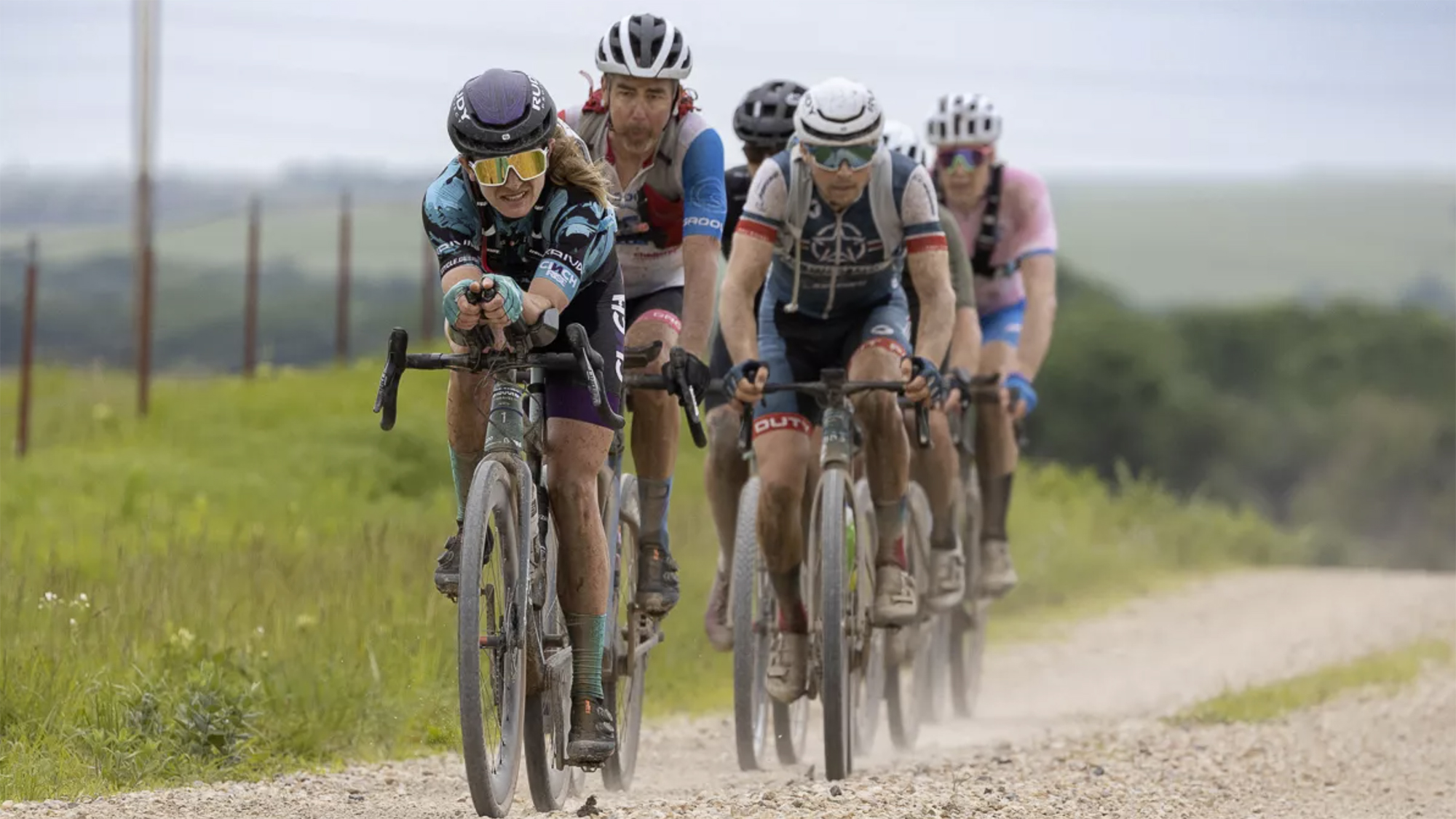
June is upon us, and that means the 2023 Garmin Unbound Gravel presented by Craft is only a few days away. The athletes have been preparing for this moment for months and years, and at this point the preparation is essentially done. With only a few days before the starting gun goes off, all that's left to worry about is the weather. The likely thunderstorms, and subsequent mud, could very well change the outcome of the race. The rain could mean a change of tactics or a different tyre choice and, especially for those competing in the 350-mile Unbound XL, the best waterproof jackets could become an important part of the technology choices for this year's race.
In fact, as Unbound has gained status over the years the race has become a place where technology choices have become more and more interesting. Greater status means more competition and more fans. The increasing scrutiny has opened an opportunity for brands to call attention to gravel technology of all kinds. At the same time, tighter competition means less room for error. With such a high level of competition, even small choices could prove to be the difference between a win or a loss. So, what can we expect to see for 2023?
The rule changes setting the tone
Each year brings small innovations through new bikes and new strategies. Athletes and brands will attempt to gain whatever small advantages are possible by building on strategies proven to work. Generally though, it takes a rule change before we see a drastic change in strategies. This year, we got a rule change.
In an effort to boost safety, two linked changes are set to alter the way Unbound athletes approach the race. The first change is that, for the first time in the history of the Unbound race, riders will start in waves. The third wave will continue to be a mass start for amateur riders but that start will now come 10 minutes after the elite men's field has already started racing. Elite women will start two minutes behind the men's field and eight minutes ahead of amateur riders.
The second new rule states that competitors in the elite field, both men and women, will no longer have the option of using aerobars or bar extensions. It's this change we expect to be the driver of real technological changes for gravel cycling. Over the last few years, aerodynamics has become increasingly more important and it's difficult to match the gains possible through the use of aerobars. It leaves the open question of what will competitors turn to as a replacement?
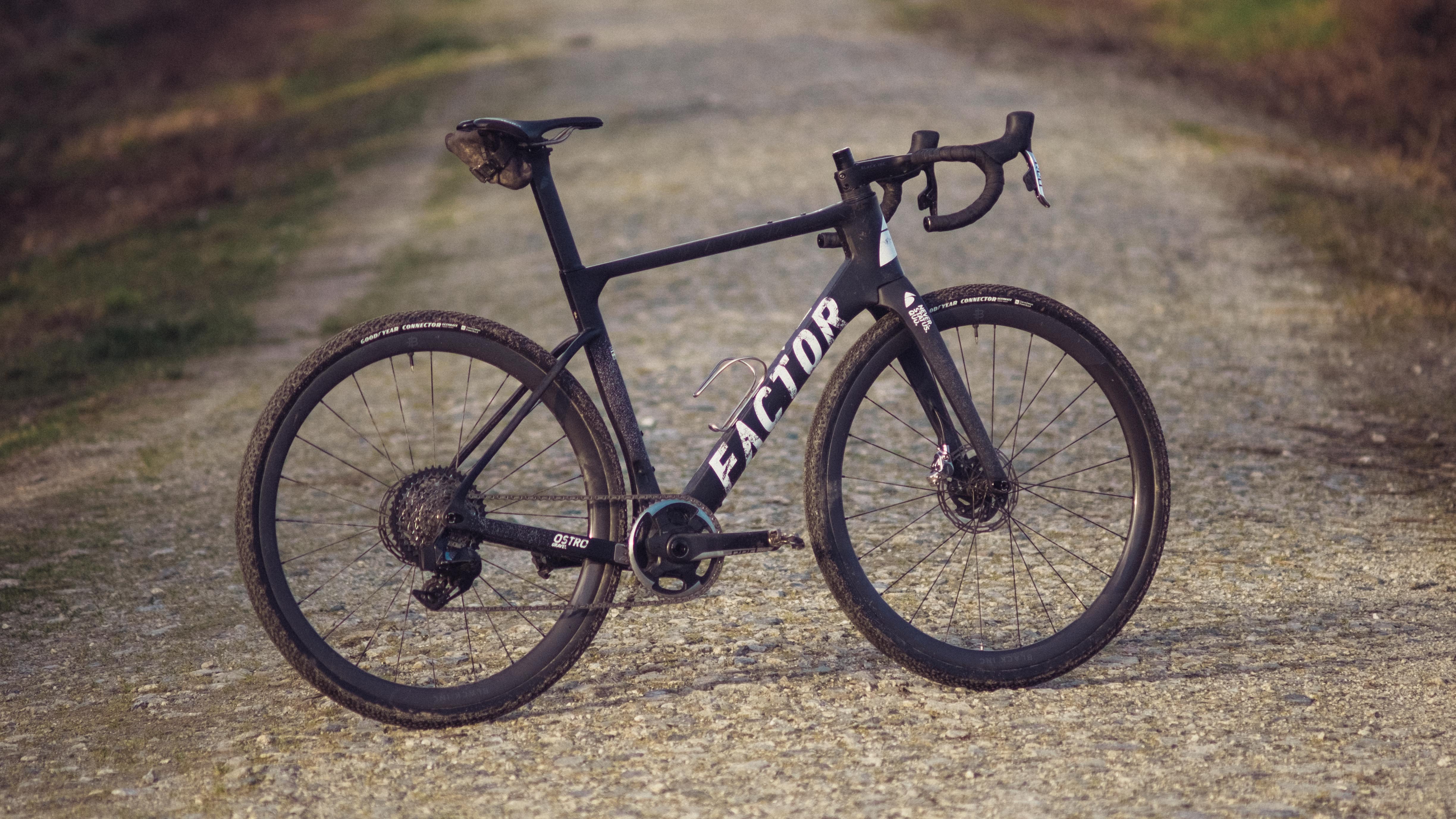
How important will aero gravel frames be?
The increased focus on aerodynamics at Unbound over the years has, in some ways, been an outlier to the greater gravel scene. Many would claim that the "spirit of gravel" is anachronistic to a focus on high speeds and the increased importance of aerodynamics that come with them. Given that brands tend to follow the lead of buyers, that has meant a slow rollout of wind tunnel tested products. There are options out there though.
One area that is likely to see more attention is that of aero gravel bike frames. The 3T Exploro hit the market in 2016 as the first aero gravel bike and it has seen use at the Unbound 200 as well as a win under Matt Stephens in 2017 plus a win for the more modern variation with the 2022 women’s XL winner Cynthia Frazier. Since then, other aero gravel bikes have come to market so are they likely to see lots of focus in 2023?
There's no doubt that aero frames will play an ever bigger role in gravel racing, and Unbound, in the future. However, given the proximity in time to the rule change, the fact that every race has different rules, and still somewhat limited desire from the buying public to go aero it seems likely frame choices will have less impact in 2023. Part of that is, if gravel bikes follow the arc of road bike development, we are still in the early days. Bikes like the BMC Kaius 01, Ridley Kanzo Fast, the Scott Addict gravel, Factor Ostro gravel, and the already mentioned 3T Exploro are still outliers and the kind of general-purpose aero tech seen in road bikes hasn't permeated the category yet.
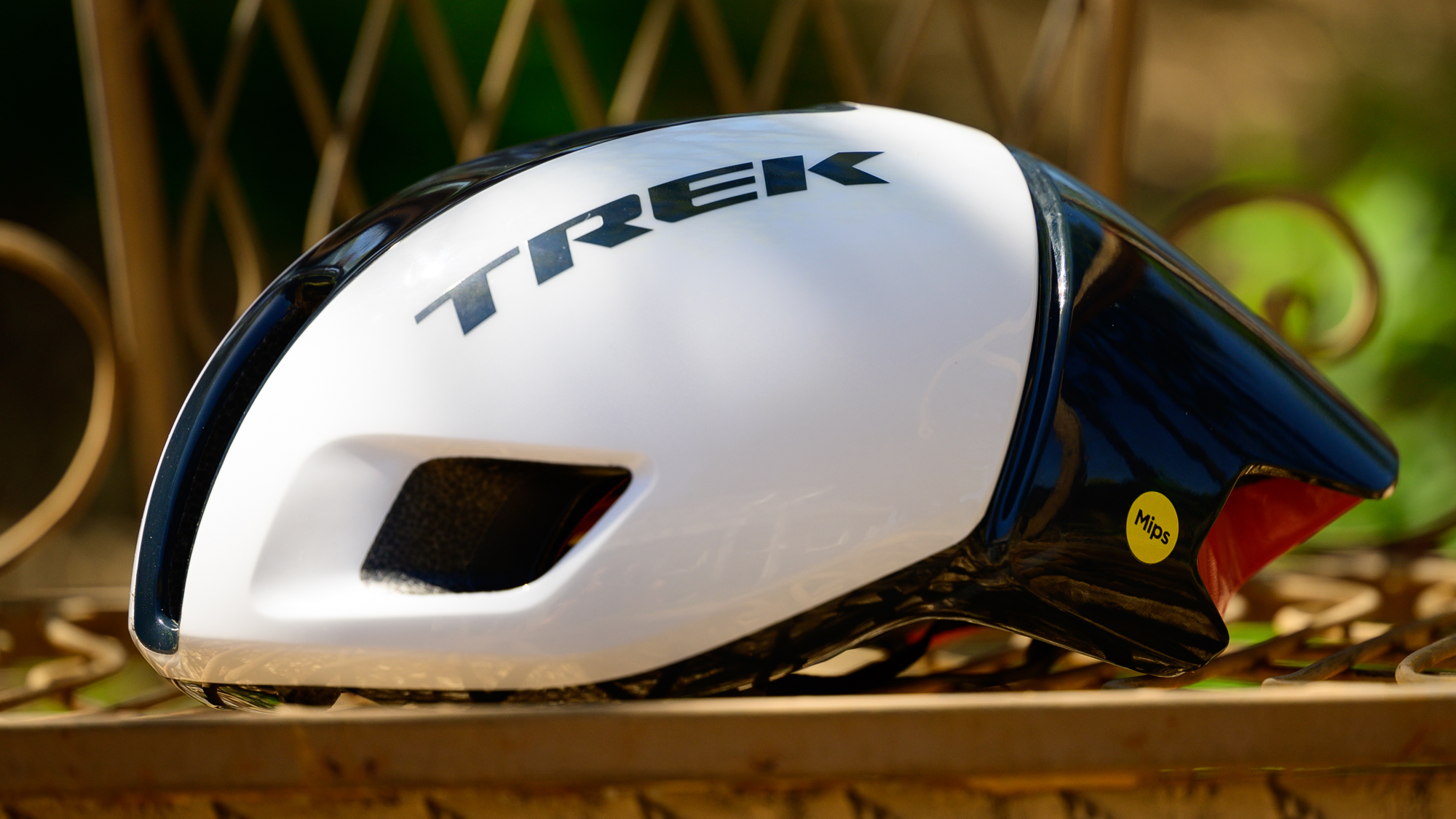
What about aero accessories?
Aero frames, both road and gravel, have never been the area of greatest opportunity anyway. Instead, accessory categories like helmets and wheels offer a much greater opportunity for gain as riders stack aerodynamics. Wheels though is a category that has already reached parity with most riders choosing a middle-range wheel to balance crosswind stability with aero performance.
When it comes to the rest of the kit, Dylan Johnson is a gravel racer who has some insight. His YouTube channel is no stranger to science-based discussions about a range of racing topics but aerodynamics is a frequent one. Recently, he posted a video analysing wind tunnel performance of common gravel equipment and the results were surprising. Those aerobars that are now outlawed? That's a 41-watt saving and the same video showed time savings for hydration backpacks and a variety of frame bags.
When asked specifically about his approach to Unbound, Johnson had this to say: "Aero is the most important 'marginal gain' for the Unbound course so I focus heavily on it. That being said, many aero choices come at the cost of cooling. For example aero helmets and TT-style skinsuits. I’ll make those calls on race day when I see the forecast. As far as my bike is concerned I’ll be on the Factor Ostro gravel aero bike. Aerobars are banned but I’ve got something up my sleeve. You’ll have to wait until race day to see that."
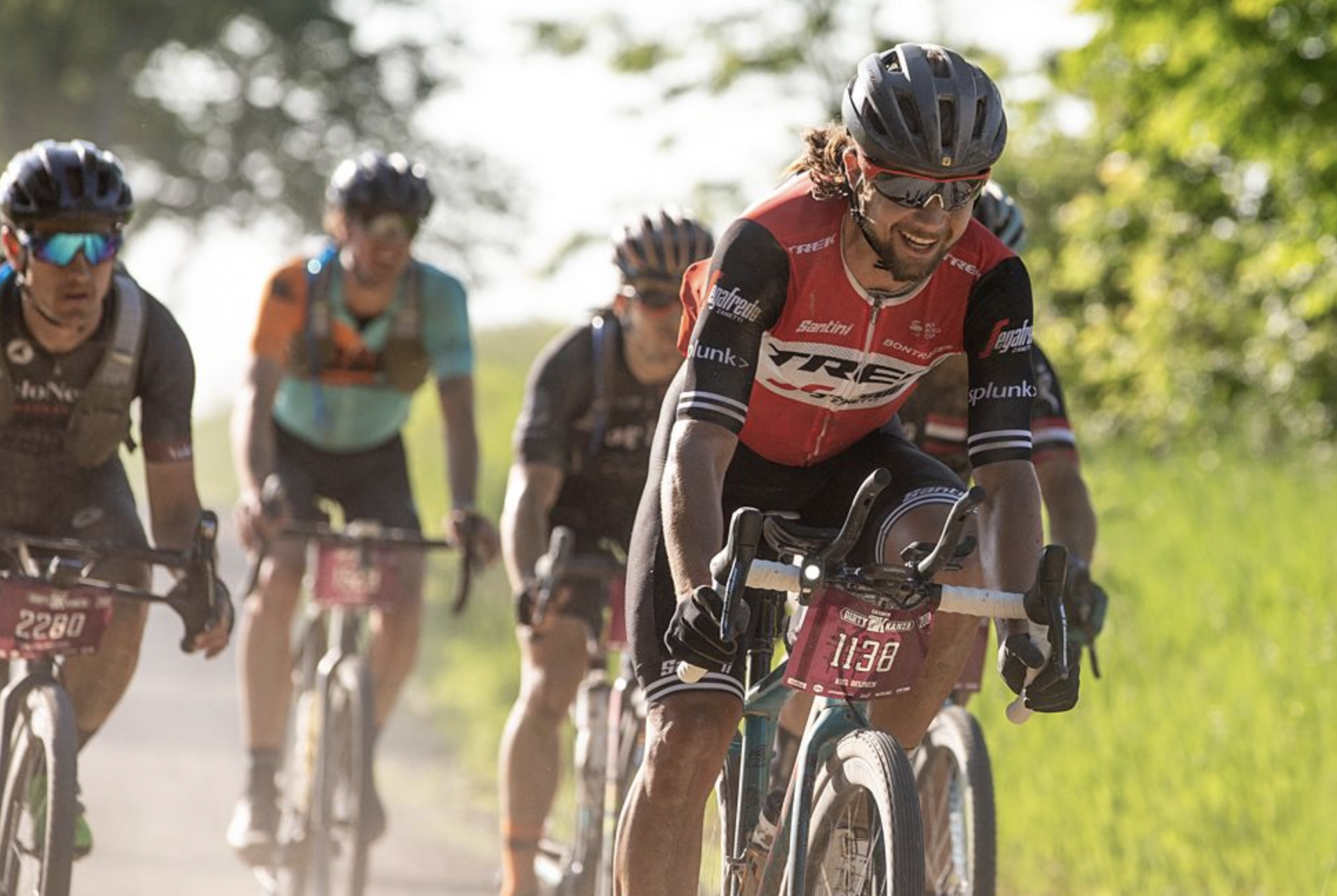
The most likely changes for Unbound 2023
Whatever Johnson might have planned, it's very likely we will see many of this year's athletes using products designed to cheat the wind. Wheels will be aero, many of the helmets in use will be aero-optimised, and there will be some riders who even spend time looking for gains from every piece of their bike and setup. In terms of real time saved though, all of those tricks are relatively small compared to what is available with body position. Johnson's video showed a 41 watts savings for aerobars but a still healthy 31 watts was there for the taking through an aero hoods position.
When veteran Unbound winner Ted King weighed in on what he expected to see, it was exactly those body position details he focused on. King stated, "The WorldTour did away with the aero tuck and wrists draped over the handlebars. As a result, the position of road riders has gotten lower and considerably more aero. Eliminating aerobars from the pro race at Unbound seems to have made a similar change to how riders sit on the bike — namely, forearms perfectly parallel with the ground, elbows at 90 degrees, and low, flat backs."
Depending on your point of view, you might not see body position as tech to expect this year. When pressed on exactly that point though, King simply flipped the question on its head saying, "Most pros have raced with aerobars for many years, if I’m not mistaken. Removing them outright is a big change to hardware!" Given his years of experience and multiple wins, it's likely worth considering the weight of the comments. It doesn't hurt that he has the wind tunnel findings as support.
Another detail King mentioned worth repeating is how he expects the fabric of gravel races may start to change. Specifically, he talked about feed zone behaviour stating, "My guess is that it’s only a matter of time before Unbound riders are taking musettes on the fly and not even stopping at the feed zones for a quick reset. That’s the antithesis of Gravel Locos' mandatory (and quite civil!) feed zone stops."
It's a statement that points to something Johnson also regularly echos. Aero gains might not be the "spirit of gravel" but as Lachlan Morton says, "gravel is changing." The focus of this article is technology but the real changes you can expect to see this year have a lot more to do with increasing competition and a more professional peloton. Aero is the technological focus but that's a lot more about how much closer, and how much faster, the Unbound race will be in 2023.
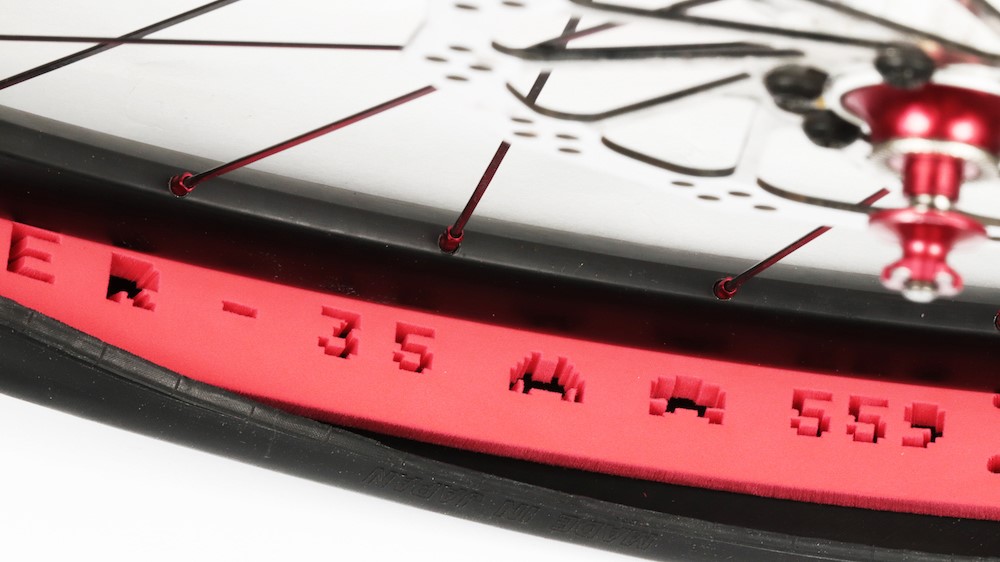
What about tyres?
Is it possible to write about the expected technology at an upcoming gravel race and not cover tyres? The sharp flint rocks at Unbound are as much a character, and decider of the race, as any other single detail. According to Anne-Marije Rook at Cycling Weekly, the trends for 2022 were for sizes ranging from "38mm to 44mm at PSIs ranging between 28 to 40." While the most popular tyres were "Specialized Pathfinder Pro, Kenda FlintRidge, Schwalbe's all-new G-ONE RS, Maxxis Rambler, and WTB SG2."
Given that the course is in the same area every year, it wouldn't seem like there's any reason to expect different this time. Still, Johnson actually talked about aero second and instead started with tyre technology as tech to watch at this year's race. In fact, it was tyre technology he seemed more excited about.
Johnson thinks, "gravel riders are getting smarter about preventing punctures at Unbound. Tyre liners have become common and the tyres themselves are getting wider and more puncture resistant. At this point, if you’re on anything under 40mm people are giving you strange looks on the starting line and they should be. That’s a bad idea for Unbound both because it increases your risk of flatting and because it’s slower. Tyres have gotten wider in every discipline of cycling over the years and gravel will be the same." So while it may be that the biggest changes in this year's race technology have little to do with new products, at least one competitor seems to be thinking about tyre inserts.







